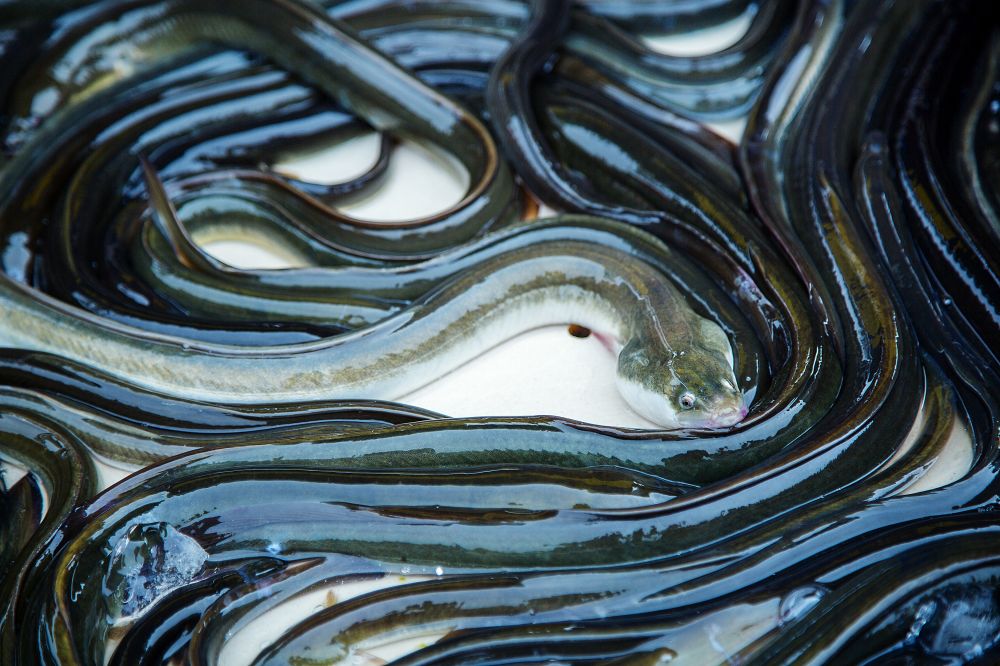
Read the article with FishingTheSpot: the eel fish
Keep an eye on this subject!
Thousands of species spotlights and techniques but also all the local information about your city!



Meet other anglers near you and share your fishing fishing trips, afoot or on a boat, at sea or in freshwater
See the fishing tripsThe Eel fish

April to September
50 cm
Did you fish
this species this month?
The Eel fish belongs to the Anguillidae family. The eel can measure up to 1.50 m in length for 4 kg, but the average size is between 40 and 60 cm. They can live up to 50 years old. They reproduce in March. They can be fished from April to September.
The eel is a species of snake fish, hence its Latin name "anguis" which means snake. Its anterior part is circular while the caudal section is flattened. Its body is covered with smooth skin and enriched with mucus. The scales only appear late. The eyes of an eel are round. It has a terminal mouth with a prominent jaw. Without pelvic fins, the eel has only small pectoral fins and long dorsal, anal and caudal fins. These meet at the level of the tail.
The Eel fish lifestyle
Eels feed on insect larvae, small fish, crustaceans or worms found in the mud.
Eels live in fresh water and breed at sea. At birth, they are still leptocephalic larvae. They have an elongated shape (about 5 mm) and are flattened laterally. This allows them to cross the ocean by letting themselves be carried by the currents. This can last between 1 to 2 years. Meanwhile, they feed on plankton.
When they reach the continents, the larvae turn into elvers. They then measure between 5 and 6 centimeters. Their journey continues in fresh waters and estuaries where they can live up to 10 or even 20 years for females. It is in these waters that their skin pigments and turns yellow. Eels turn a silvery color, usually in autumn, when they have enough reserves (20% of body weight) to return to the sea.
Thus, the metamorphosis manifests itself in larger eyes for better visibility in the depths of the sea, a darker and more silvery color to blend in well with its environment and finally neuromastes showing a lateral line. During the journey, male and female do not feed. Reproduction takes place particularly in March at a depth of 400 or even 700 meters. The number of eggs is estimated at 1 million per kilo of female.
The Eel fish habitat
While some eels manage to swim up rivers, others simply stay in brackish waters. The yellow eel is active at night and is able to emerge from the water and survive as long as it reaches other aquatic environments at very short distances, thanks to its mucus and narrower gill opening.
They are present in the North Atlantic, The Mediterranean and the Black sea.
The Eel fish angling
You can fish Eel from April to September. They are particularly abundant at night when they are looking for food.
You can bait it with earthworms or small fish with the bottom fishing method.


